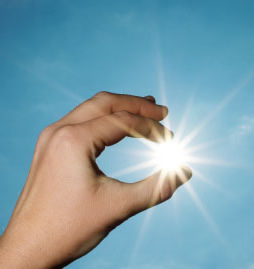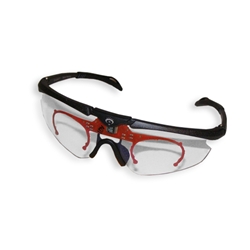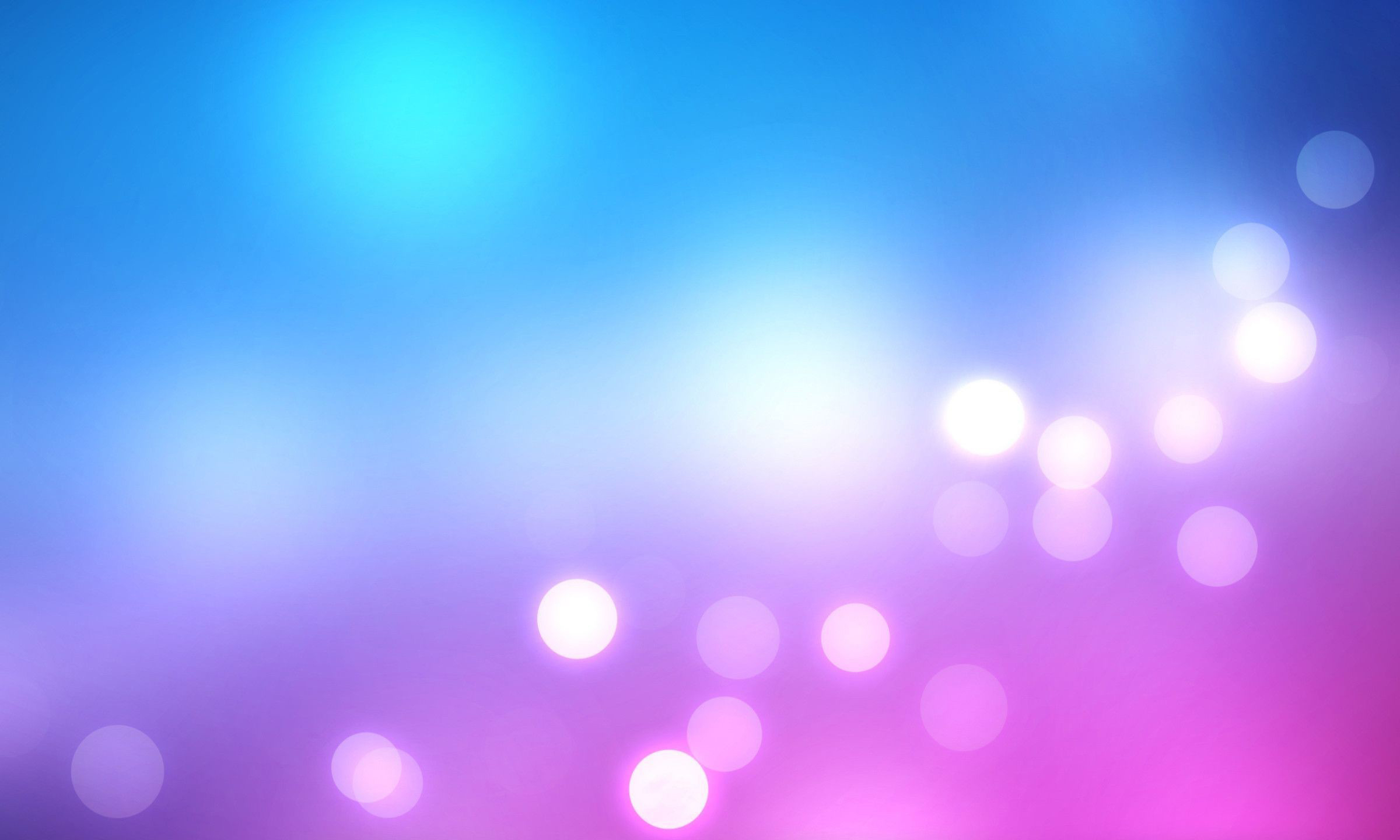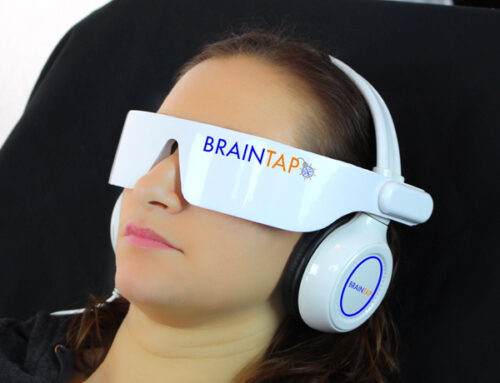Eye Lights..for Your Best Brain
Do you want to increase your ability to throw a football, play tennis, kick a soccer ball, hit a baseball, or sink a putt? Eye Lights?
Eye lights can help you do all of this and more. For your body to perform at its optimal level, your brain must be working at its best level. Generally, most brains have only half of it functioning at its highest level.
Just imagine what you can accomplish on the field and in your daily life if your entire brain is working optimally. Eye lights could be the key to that optimization!
We all have one side of the brain functioning at a higher level than the other (this is your dominant side). One of the most direct avenues to the brain is via the eye. By stimulating the non-dominant or weaker side of your brain, you allow it to become stronger, thus improving overall performance both mentally and physically. Eye lights via stimulation go directly to the non-dominate brain causes an excitatory barrage to travel to the mesencephalon, the most metabolic area of the brain, where an increase in cellular function occurs. The excitatory barrage travels also to the parietal, temporal, and occipital lobes of the brain, while collateral fibers lead to the pineal gland, pituitary gland, and the hypothalamus.
Eye lights are being worn by children with learning disabilities in order to keep them more attentive and focused in the classroom. Athletes are wearing Eye lights to increase performance on the field or to push through a plateau. Anyone can wear Eye lights to deal more effectively with stress, depression, or neurological disorders.
How Do Eye lights Work?
Both sides of the brain are being affected, but emphasis is placed on the non-dominant system where dysfunction usually first occurs. Stimulation of the non-dominant eye will affect the opposite hemisphere of the brain via the thalamus. When stimulating the right eye, the left side or analytical portion of the brain will be affected greater. When stimulating the left eye, the right side or creative portion of the brain will be affected greater. Eye lights enable these results.
Eye lights offer a choice of settings for either the right or left eye, but the NON-DOMINANT EYE ALWAYS GETS THE THERAPY. The lights flash in a monocular pattern with both the top and bottom rows flashing at the same time. However, one row will always flash brighter than the other. When the upper row of lights is flashing brighter, it will affect the temporal lobe (mentality/emotionality) of the brain and parvo cells of the thalamus greater. When the bottom row of lights is flashing brighter, it will affect the parietal lobe (sensory/motor) and magno cells of the thalamus greater.
Protocol for Wearing Eye lights
Mental Function by the use of Eye Lights
When wearing Eye lights in order to increase mental function, lights should be blinking on the non-dominant eye with the TOP row of lights blinking brighter.
When the eye lights are programmed with the top row blinking brighter, you must limit how long the glasses are being worn during each session. While Eye lights can be worn 3-4 times a day, you should avoid wearing them for more than 20-30 minutes each time. If a patient experiences headaches or eye fatigue, this may mean that they have worn the glasses for too long, and they should lessen the length of time during the next session.
Physical Function with use of the eye lights:
To increase motor function, the eye lights should be blinking on the non-dominant eye with the BOTTOM row of lights blinking brighter.
You may use the same protocol listed above. However, once a patient has reached the standard protocol of 15-20 minute intervals, glasses can be worn for extended periods of time. As long as the eye lights are blinking brighter on the bottom, they can be worn the entire duration of practice, game, workout, etc.
Top Row vs. Bottom Row of Eye Lights:
The parietal lobe of the brain deals with sensory (input) and motor (output). A person with motor problems such as Parkinson’s, MS, ALS, stability issues, sensory integration problems, numbness, or atrophy would benefit from the bottom row of the eye lights blinking brighter. Additionally, athletes could also benefit from the bottom row of lights blinking brighter in order to increase physical performance.
The temporal lobe of the brain deals with emotionality and mentality. If one has problems such as ADD, dyslexia, memory problems, speech and hearing problems, learning difficulties, dementia, cloudy thought processes, or depression, the top row of teh eye lights blinking brighter would be of greater benefit.
EYE LIGHTS
Ocular light therapy or eye lights is a method of therapeutically sending light through the eyes in order to stimulate brain function. This enables us to open up neurological pathways which significantly affect the brain and every cell of the body. Light, after food, is the second most important environmental necessity in controlling bodily functions. Studies reveal through the use of light, the entire blood stream, circulation and elimination of toxins are affected.
Eye lights were designed as glasses emitting light pulses and can be used by almost anyone.
Alzheimer’s Disease/ Eye Lights might help?
Eye lights can excite nerve cells, and potentially may slow down the progression of the disease. It also may cause the brain to produce higher levels of neurotransmitters, leading to improved temporal lobe function (memory/mental state).
Eye Lights for Dyslexia:
Dyslexics have a disconnect or slowing down of the magno cell pathway, found in the thalamus, that does fast processing for perceived position, shape, motion, and low contrast. Eye lights stimulates the entire thalamus so that all 12 layers are working at their optimal level. When 100% of the thalamus is excited, improved perception of visual stimuli occurs. It has been found that 87% of reading disabled children displayed an improvement in reading comprehension with blue filters. This blue filter seems to remove enough of the red in what a person sees thus allowing the magno cells to work properly.
The use of Eye Lights for ADHD:
It has been found that many symptoms of ADHD have a similarity to those associated with binocular vision problems, such as convergence insufficiency and accommodative problems. Eye lights, which stimulates the visual system, helps to strengthen the weaker eye muscle. Light therapy creates global excitation of the brain, causing an elevation in the production of hormones and neurotransmitters such as serotonin and dopamine.
Studies have found certain colors can reduce hyperactivity, increase attention span, and improve speed and accuracy. Behavioral problems within the classroom have a link to fluorescent lighting which lack the blue spectrum of color. Eye Lights train the brain.
Autism and eye lights for therapy:
In autism, a circuit involving the frontal lobe and the thalamus (relay station for nerve impulses) of the brain functions abnormally. Many autistic children exhibit sensory integration dysfunction, displaying difficulty integrating information coming in from each of their senses. Eye lights work by stimulating the non-dominant eye which excites the entire thalamus, resulting in global excitation of the brain. A cascade of excitation and activity occurs reaching each of our other senses, leading to a better ability to coordinate sensory information.
Stroke and getting back to normal via Eye Lights:
Brain cells die when they no longer receive oxygen and nutrients from the blood or there is sudden bleeding around the brain. Light therapy initiates cellular activity, causing cells to produce new proteins in order to stay healthy. Since visual pathways are abundant throughout the brain, using eye lights to excite the cells around the area of stroke can be a valuable rehabilitative tool. Eye lights can minimize further degradation of tissues and neurons around the affected area. The excitation of cells can improve the maturation of the damaged area to help improve mental, physical, and cognitive losses.
Multiple Sclerosis and Eye Lights for Therapeutic Use:
In MS, myelin, the fatty substance surrounding our nerves which conduct impulses between the brain and other parts of the body is destroyed. Eye Lights can help sustain myelination by exciting the cerebellum, as well as other cells into producing proteins in order to stay healthy. This stimulus also helps to stabilize muscles of the spine, allowing for better integrity of mid-line structures.
Scoliosis, the Motor System & Chiropractic & Eye Lights
When you lose input from the medial rectus muscles, you essentially decrease input to the erector spinae muscle group of the spinal column. This occurs on the same side as the weak medial rectus muscle or non-dominant eye, and you will see rotational components of the spinal structures. On the side of medial rectus weakness you will see decreased tone musculature. The opposite occurs on the dominant side, where you will see increased tone or hypertonic musculature. Spinal rotations away from the side of non-dominance are what you should find upon palpation and x-ray examination. By stimulating the non-dominant eye, with eye lights, the Multifidi also become stimulated and tone changes can occur.
FAQ’s
What is the length of time Eye lights should be worn by the standard patient? Patients should begin wearing the Eye lights for 5 minutes 2-3 times a day. In about 5 days, they should increase to 10 minutes 2-3 times a day. They will gradually work their way up to the standard protocol of 15-20 minutes 2-3 times a day.
Patients with Neurological Damage
Patients who have experienced strokes, seizures, or other neurological damage should have a modified protocol. Each patient should be evaluated on an individual basis as to whether Eye lights are an appropriate therapeutic device for their particular disorder.
Patient should start out at 1 minute intervals 2-3 times per day. Duration may be increased over time, not to exceed 10 minutes per session. What is the length of time Eye lights should be worn by the neurologically impaired person? Begin lying down while wearing the Eye lights. As the lights begin to flash you need someone to watch your pupils while keeping count of the number of times the lights flash. The glasses are on a 10 second cycle where they flash for 2 seconds and rest for 8 seconds. Continue monitoring and counting until the pupils begin to dilate and blow open and then stop therapy. This will give you a basis for how long you are able to wear the glasses before becoming fatigued. So, if the pupils begin to dilate after 6 flashes, one would wear the glasses for only 5 flashes during each session.
Each person should be evaluated on an individual basis as to whether Eye lights are an appropriate therapeutic device for their particular disorder.
Another option is to start out at 1 minute intervals 2-3 times per day. Duration may be increased over time, not to exceed 10 minutes per session. Eye lights should be used in moderation until used to the therapy.
Are there any contraindications when using Eye lights? If Eye lights are worn too long in the beginning stages of treatment one may suffer a slight headache or eye fatigue. This is indicative of brain fatigue, so it is important to reduce the amount of time Eye lights are being worn during each session. Why do Eye lights use red LED’s? Based on the sign waves of color, red provides the lowest amount of input to the brain, allowing for longer periods of stimulation before the brain fatigues. Why do Eye lights flash for 2 seconds and rest for 8 seconds? Eye lights provide a quick burst of light followed by a long rest period so as not to fatigue the brain too quickly.
| Eye lights and Learning Problems A visual problem can be easily mistaken for a learning problem. For example, children who have visual problems often can’t stay focused on their school work or another task. They may be misdiagnosed as ADHD because children with ADHD elicit the same problems in the same areas. | ||
| Eye light therapy will strengthen the weaker eye and help correct many vision problems that may contribute to a child’s learning abilities: | ||
|
||
Increase Serotonin Production
Children who are diagnosed with learning disabilities have a neurotransmitter imbalance and are often not producing enough serotonin. It is involved in controlling emotions, ability to pay attention, motivation to do things, and ability to think before acting. Eye lights can help a child return to a more calm state.
Drugs such as Ritalin are used to stimulate the brain into producing elevated levels of serotonin. Side effects of these type of drugs include: tics, dependency, insomnia, and a dramatic decrease in appetite. Eye lights can promote serotonin production naturally, without the above side effects. Eye lights excite the receptors at the back of the retina. In turn, there is firing to the brain stem in three different areas including the pons, which stimulates A7 and A8 cells into producing serotonin. Eye lights act in the same fashion, only naturally.
According to some recent studies, children who play video games end up with increased serotonin levels. This is exactly what Eye lights achieve naturally with its light pulses to the brain, while allowing a child to study or play a sport at the same time.
| Increase Dopamine Production
In the brain, Dopamine controls motor function and strength of muscle. Eye lights stimulate A9 and A10 cells, located in the mesencephalon of the brain, and help produce higher levels of dopamine. Higher dopamine levels can increase a child’s ability to throw a football, kick a soccer ball or hit a baseball. Many Athletes are Wearing Eye lights Here are a few athletes who are wearing Eyelights: “””I used Eye lights in a golf tournament and they really helped me…I was able to drive with those guys who were in their 60’s.” N. Flippen – 84 year old Golfer “”Eye lights have made quite a difference in my soccer performance…they make me more alert and aware of things going on around me.” J. Price – 13 year old Soccer Player Many athletes are wearing Eye lights to help improve their game. Before the 2000 Summer Olympics in Sydney, members of the U.S. Women’s Swim Team wore the glasses and several actually won gold medals! One Olympic gold medal swimmer, Lars Frolander from Sweden, was one of the people initially responsible for the research and development of Eye lights. He had begun to see a decrease in his level of athletic performance and received treatment from Dr. Peter Jaillet, inventor of Eye lights. During his treatments, Dr. Jaillet found that eye light therapy worked best at increasing his physical abilities in and out of the pool. Because Lars often traveled around the world for competitions, he needed portability to the therapy he was receiving in the office. Thus, Eye lights were born! |
|
| Change in Gait Patterns
If an athlete has a non-dominant right eye, there will be weakness of the back muscles on the right side, resulting in decreased tone on that side and increased tone on the dominant side. This causes a shortened gait pattern to occur on dominant side (left), while the non-dominant side has a longer stride. The result is abnormal or uncoordinated movement due to the rotation of the pelvis. Eye lights can stabilize the mid-line so that both sides become equal and a change in gait pattern occurs. Your Light Journey and Chiropractic Although chiropractic care helps to restore skeletal and muscular distortions, sometimes, disturbances in the energy systems of the body may not be reached directly. Light therapy may help restore energy system connections thereby maintaining the chiropractic adjustment. It has been found that dysfunction begins at the energy level, later manifests at the cellular level, then leads to an inflammatory state and lastly to the physiological disorders we see at the disease state. By stimulating our core energy, we can improve healing or prevent the origin of dysfunctions. |
To purchase a pair of Eye Lights
Contact: Dr Iris Rosenfeld
949-380-7215 or [email protected]








